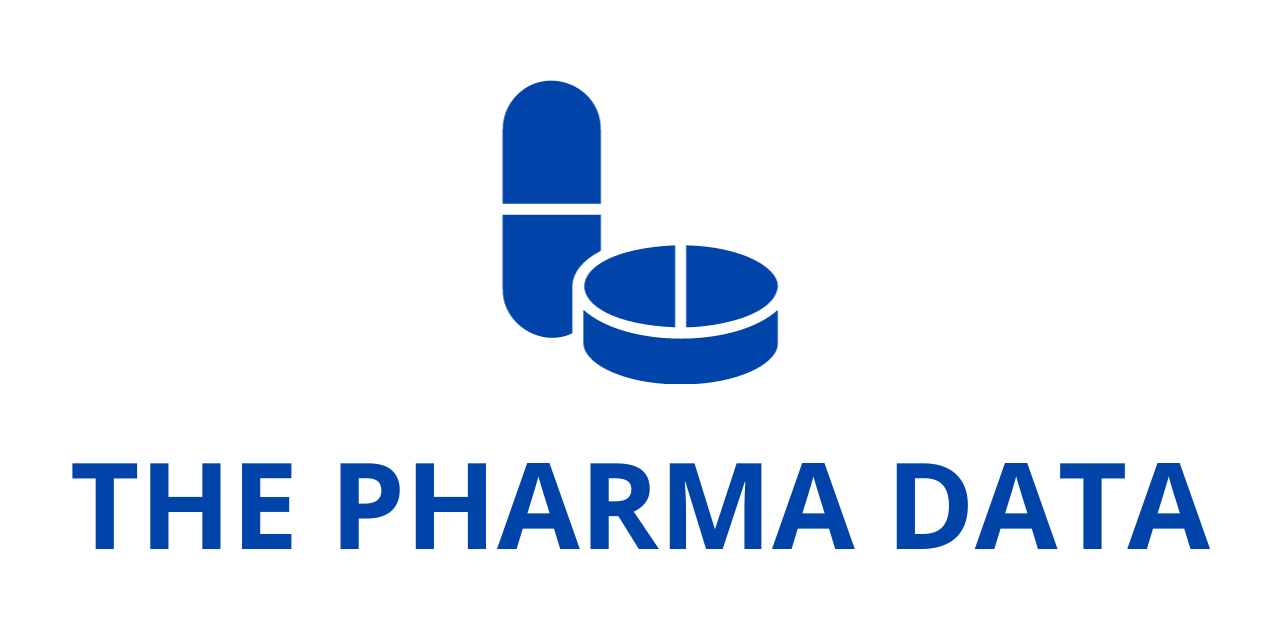
Circle Pharma’s Nature Publication Highlights Breakthrough in Cyclin A/B RxL Inhibition and Preclinical Anti-Tumor Activity
Circle Pharma, Inc., a clinical-stage biopharmaceutical company pioneering next-generation targeted macrocycle therapeutics for difficult-to-treat cancers, announced the publication of a landmark paper in Nature detailing robust preclinical tumor suppression and new mechanistic insights achieved through the inhibition of cyclin A and B RxL substrate binding in E2F-high tumor cells.
At the center of this breakthrough is CID-078, Circle Pharma’s first-in-class, orally bioavailable macrocycle inhibitor that simultaneously targets cyclins A and B. Unlike conventional drug approaches, which often fail against historically “undruggable” proteins, CID-078 leverages Circle’s proprietary MXMO™ macrocycle drug discovery platform to achieve both potency and oral availability. The drug is currently being evaluated in an ongoing Phase 1 clinical trial in patients with advanced solid tumors, and the newly published preclinical data suggest it could represent a major advance in oncology therapeutics.
Understanding the Biology: Cyclins, CDKs, and Cancer
Cell cycle regulation is one of the most fundamental biological processes governing life. Cyclins, including cyclin A and cyclin B, are a family of regulatory proteins that act as master controllers of cell division. By binding to and activating their enzymatic partners, the cyclin-dependent kinases (CDKs), these proteins orchestrate the precise progression of cells through the phases of the cycle—from DNA replication to mitosis.
In healthy cells, cyclin activity is tightly regulated. However, in many cancers, especially those driven by high E2F transcription factor activity, the cell cycle accelerates uncontrollably. This hyperactivity allows tumor cells to bypass normal checkpoints, sustain unchecked DNA replication, and proliferate rapidly.
One key hallmark of this biology is observed in cancers with RB1 alterations, such as small cell lung cancer (SCLC), subsets of triple-negative breast cancer (TNBC), and other solid tumors. In these malignancies, the loss of RB1 function removes a critical brake on E2F activity, making the cells especially dependent on cyclins A and B to maintain their proliferation and survival.

Traditional drug discovery efforts have struggled to directly inhibit cyclins due to their structural characteristics and intracellular localization. Many proteins in this family have long been labeled as “undruggable.” This challenge has persisted despite the clinical success of CDK4/6 inhibitors, which target different aspects of cell cycle regulation but are ineffective against RB1-deficient cancers.
Circle Pharma’s innovation lies in disrupting protein–protein interactions mediated by RxL motifs, short linear motifs that certain substrates use to bind cyclins A and B. By blocking this binding, CID-078 destabilizes critical regulatory interactions, setting off a cascade of cellular dysfunction that ultimately kills cancer cells.
Key Mechanistic Insights from the Nature Study
The newly published Nature paper, co-authored by researchers from Circle Pharma and leading academic institutions including Dana-Farber Cancer Institute, Harvard Medical School, the University of Texas Southwestern Medical Center, and the University of Oxford, details how CID-078 exerts its potent anti-cancer effects.
The preclinical research highlighted several mechanistic insights:
- Blocking Cyclin A–E2F Interaction
- By preventing cyclin A from binding its E2F substrates, CID-078 triggers sustained E2F activity, leading to DNA replication stress and extensive DNA damage.
- This loss of regulatory control pushes cancer cells into a vulnerable state where they accumulate genetic instability.
- Disrupting Cyclin B–Myt1 Interaction
- CID-078 also blocks the interaction between cyclin B and Myt1, a kinase that normally functions as a checkpoint brake to prevent premature mitotic entry.
- When this brake is removed, tumor cells harboring DNA damage are forced into mitosis, a process that inevitably leads to catastrophic cell death.
- Robust Anti-Tumor Efficacy
- In preclinical patient-derived xenograft (PDX) models, including models resistant to standard chemotherapy, CID-078 demonstrated potent anti-tumor activity.
- These findings underscore its potential as a therapeutic for patients with few existing treatment options, such as those with relapsed or refractory SCLC.
Together, these findings reveal that cyclin A/B RxL inhibition is not merely a cell cycle blockade—it is a two-pronged assault that induces lethal replication stress and removes fail-safe mechanisms, driving cancer cells into apoptosis.
Perspectives from Circle Pharma and Academic Leaders
Circle Pharma executives and collaborating scientists emphasized the significance of this milestone.
David J. Earp, J.D., Ph.D., President and CEO of Circle Pharma, stated:
“We are excited to have the novel biology and compelling anti-cancer effects of the cyclin A/B RxL inhibitors developed at Circle recognized within the broader scientific community through this publication in Nature. This work underscores the capabilities of our MXMO™ platform to generate oral, cell-permeable macrocycle therapies, such as CID-078, including for historically undruggable targets such as cyclins. With our first-in-human Phase 1 study of CID-078 well underway, we are eager to see the innovative research outlined in this publication translate into new, high-impact therapeutic options for people living with cancer.”
Matthew G. Oser, M.D., Ph.D., Senior Author of the publication and Associate Professor of Medicine at Dana-Farber Cancer Institute and Harvard Medical School, added:
“These findings build upon previous work and reveal additional gain-of-function mechanisms through which cyclin A/B RxL inhibition triggers apoptosis in cancer cells, further supporting this approach for E2F-driven cancers, such as cancers with RB1 alterations, which includes nearly all SCLCs, up to half of triple-negative breast cancers, and subsets of other solid tumors. Circle Pharma’s cell-permeable, oral macrocycles are designed to overcome the limitations of other therapeutic modalities and are ideally positioned to access cyclins and other historically undruggable targets, offering exciting potential for patients with cancer.”
Why This Matters: The Broader Significance of Cyclin Inhibition
The significance of Circle Pharma’s research goes far beyond one compound. It represents a paradigm shift in oncology drug discovery in several ways:
- Targeting the Undruggable
- Cyclins have long been considered inaccessible to conventional small molecules or biologics. Circle Pharma’s macrocycle platform shows that with the right chemistry, these proteins can indeed be drugged.
- A New Option for RB1-Altered Cancers
- Unlike CDK4/6 inhibitors, which are ineffective in RB1-deficient tumors, cyclin A/B RxL inhibitors exploit the very vulnerabilities created by RB1 loss. This makes them especially suited to treating SCLC and TNBC, cancers with devastating outcomes and limited therapeutic options.
- Oral Macrocycles as a New Modality
- Macrocycles combine the specificity of biologics with the cell permeability of small molecules. If successful, Circle Pharma’s pipeline could pave the way for a new class of oral, targeted cancer therapies.
- Potential Combination Therapies
- Given their unique mechanism, cyclin A/B RxL inhibitors may synergize with other treatments, such as DNA-damaging agents, PARP inhibitors, or immunotherapies. This opens new possibilities for rational combination regimens.
The Road Ahead: Clinical Development of CID-078
The preclinical success of CID-078 has already advanced into clinical testing. Circle Pharma’s Phase 1 clinical trial is enrolling patients with advanced solid tumors to evaluate the drug’s safety, pharmacokinetics, and preliminary anti-tumor activity.
While early clinical data are not yet available, the mechanistic rationale and preclinical efficacy create strong anticipation for the trial’s outcome. Should CID-078 demonstrate clinical benefit, it could become the first therapy to directly target cyclin A and B substrate interactions.
Beyond CID-078, Circle Pharma is applying its MXMO™ macrocycle discovery platform to other historically challenging cancer targets, positioning itself at the forefront of a new era in targeted therapeutics.
A Collaborative Effort
The publication reflects the power of collaboration between industry and academia. By partnering with leading cancer research institutions such as Dana-Farber, Harvard Medical School, UT Southwestern, and the University of Oxford, Circle Pharma has validated its approach in rigorous scientific settings. This cross-pollination of ideas ensures that drug development is not only innovative but also grounded in deep biological understanding.
A Step Toward New Hope for Cancer Patients
The Nature publication of Circle Pharma’s cyclin A/B RxL inhibitor research is more than an academic milestone—it is a signal that drug discovery for historically undruggable cancer targets is entering a transformative phase.
By successfully engineering an oral, cell-permeable macrocycle capable of disrupting critical cyclin interactions, Circle Pharma has demonstrated both scientific innovation and therapeutic promise. For patients with SCLC, TNBC, and other RB1-altered cancers, where treatment options remain limited, this approach could represent a desperately needed lifeline.
As CID-078 progresses through clinical testing, the oncology community will be watching closely. If its preclinical promise translates into patient benefit, Circle Pharma may establish cyclin A/B RxL inhibition as a new therapeutic frontier—ushering in not just a new drug, but a new way of thinking about drugging the “undruggable.”




